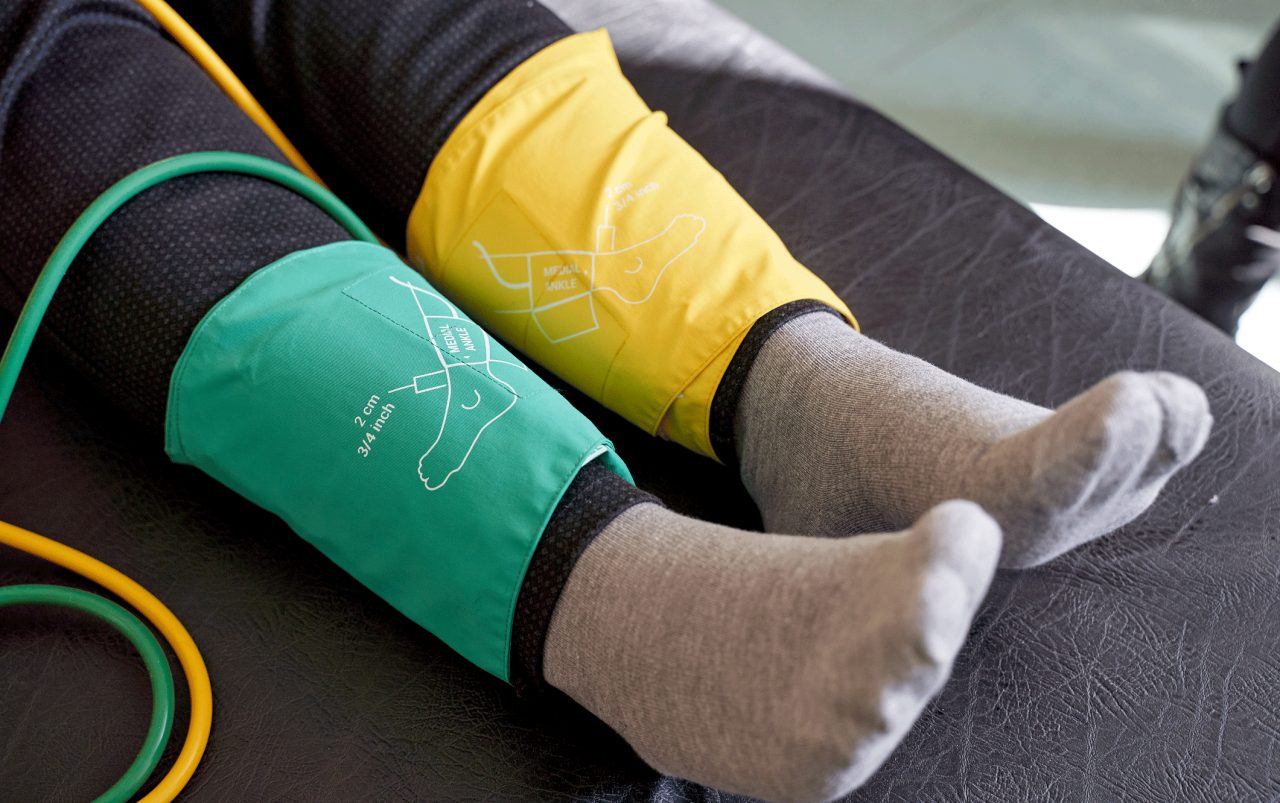What Is Peripheral Artery Disease?

What is peripheral artery disease? When the arteries that bring blood to your legs narrow, you may feel pain and develop other problems. Here’s what you should know.
What is peripheral artery disease?
The peripheral arteries bring blood to your legs, stomach, arms, and head. A waxy buildup on artery walls called plaque, which narrows the passage and blocks blood flow, cause peripheral artery disease symptoms.
The condition is most common in your legs. But plaque can also narrow arteries supplying blood to your kidneys or stomach.
YOU MIGHT ALSO LIKE: Another Reason to Quit Smoking -- NOW
What are the symptoms of peripheral artery disease?
Working muscles need more blood flow. You might feel a cramp or tiredness in your thighs, calves, or hip muscles while walking, climbing stairs, or exercising. The discomfort is a sign that your muscles aren’t getting enough blood. It usually goes away in a few minutes if you stop moving.
Men may have problems keeping an erection, especially if they have diabetes.
Many people with peripheral artery disease have no symptoms or assume they have arthritis, sciatica, or just "stiffness" from getting older. If you have diabetes, you might think the pain is neuropathy, which feels like burning in your feet or thighs.
It is important to talk to a doctor to sort out the cause of any pain. Peripheral artery disease often isn’t diagnosed, though it isn’t difficult to pin down.
In a few minutes, your doctor can compare the blood pressure in your feet to the blood pressure in your arms. In this test, an ankle-brachial index (also called ABI), you’d expect ankle pressure to be at least 90 percent of arm pressure. In severe cases of peripheral artery disease, it might fall below 50 percent.
If your percentage is low, you may receive tests that reveal blockages in your arteries. They include a doppler and ultrasound (Duplex) imaging, computed tomographic angiography, magnetic resonance angiography, and an angiogram (also called an arteriogram).
Don’t skip talking to your doctor. In advanced cases, the pain lingers. Your feet or lower legs may be noticeably cooler to the touch. You might have sparse hair on your legs. Your nails might grow slowly, or you might have sores on your feet that take a long time to heal.
If part of your body stops receiving any blood at all, it will begin to die and may need to be amputated.
Who is at risk for peripheral artery disease?
Your risk increases with age and is higher if you smoke cigarettes, or have diabetes or high blood pressure or high cholesterol. Obesity and lack of exercise can weaken your arterial system. Family history counts, too: Genetic factors affect how the disease progresses.
If you have peripheral artery disease, you also have a greater risk of coronary artery disease, heart attack, or stroke.
How do you get peripheral artery disease?
Usually, the cause is atherosclerosis. Plaque, made of up of fat and cholesterol, has built up on the inside of your artery walls. If it gets thick enough to narrow the artery, that part of your body receives less blood. If the plaque becomes brittle or swells, it can break away and trigger a blood clot. The clot can narrow your artery even more or block it entirely.
How is peripheral artery disease treated?
You may be prescribed medication to lower cholesterol, manage blood pressure, and improve blood flow or control blood sugar.
You may need surgery if an artery is blocked in your legs or stomach. In bypass surgery, you will receive a new part that carries blood around the blocked area. In an angioplasty, small balloons are placed into your artery to stretch it open. Once it is expanded, the surgeon will place a stent to hold the artery open. Surgeons can deliver drugs to dissolve clots or remove them.
How can you prevent peripheral artery disease?
Your strategy to prevent or reduce peripheral artery disease is the same as the good health habits we all should follow. Quit smoking. Exercise regularly. Lose extra weight. Eat more fruits and vegetables, and avoid fast food, deep-fried food, processed meat (sausage, bacon, and hot dogs), and desserts.
If you have high cholesterol, speak to your doctor about your diet. Some foods high in cholesterol may be safe for you, including eggs, shellfish, full-fat yogurt or cheese, and organ meats. Take any prescribed medicine as directed, and regularly check your cholesterol levels, blood pressure, and blood sugar.
YOU MIGHT ALSO LIKE: How to Decrease Peripheral Artery Disease Symptoms
Updated:
March 07, 2023
Reviewed By:
Janet O’Dell, RN